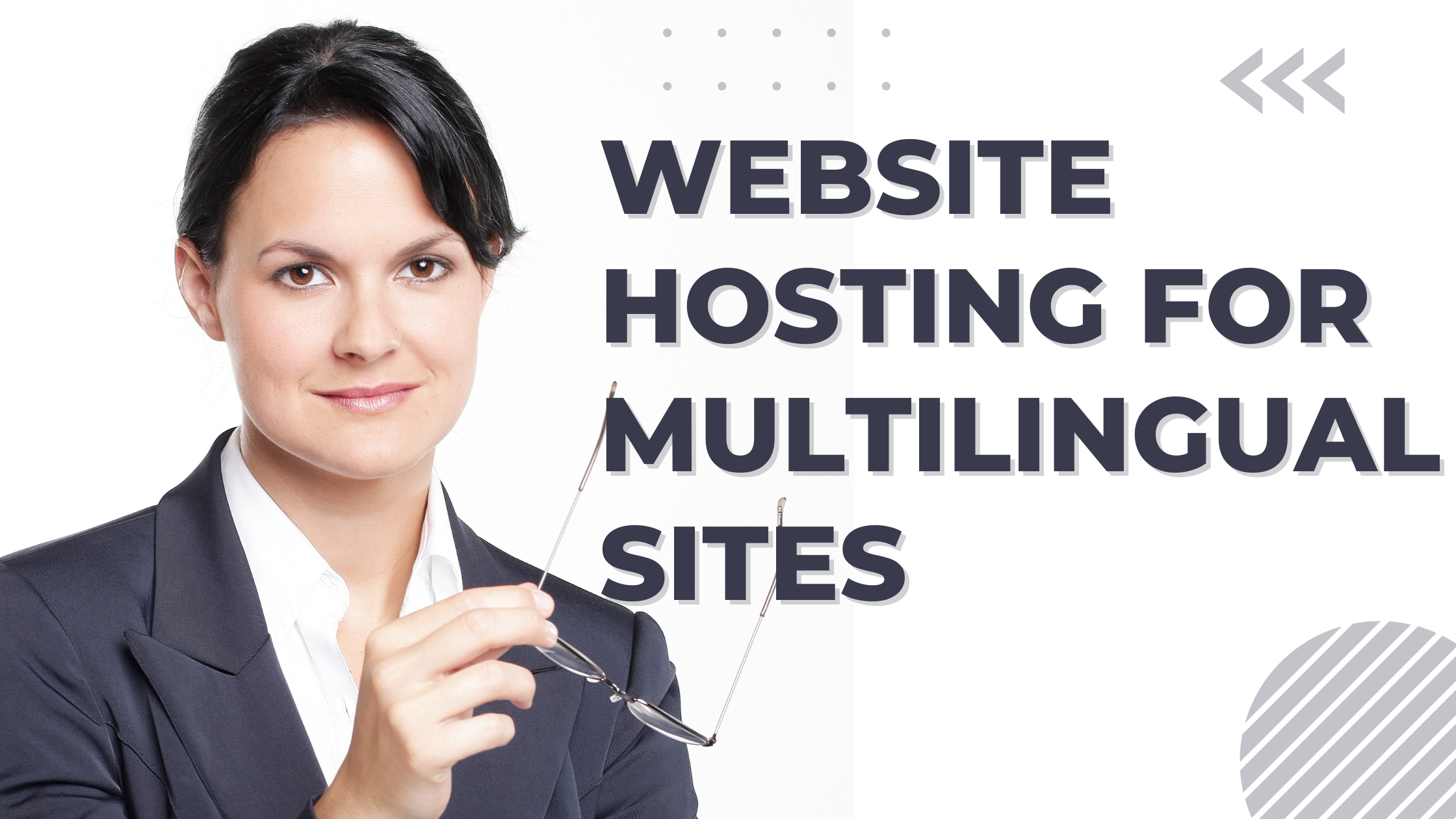
If you are looking to expand your audience globally, having a multilingual website is a great way to connect with people across different regions. However, hosting a multilingual site requires specific features to ensure smooth performance, usability, and security. Let’s explore the best practices and recommendations for hosting multilingual websites.
Why Do You Need Website Hosting For Multilingual Sites?
Hosting a multilingual website can be a bit more complex than a standard single-language website. You’ll need hosting that can handle the extra load of multiple languages and deliver them efficiently to users from various countries. In addition, search engine optimization (SEO) for multilingual sites requires more consideration, such as proper language tags and optimized loading speeds for each region.
Key Features of Hosting for Multilingual Sites
To run a multilingual website effectively, you need to consider the following key features in your hosting:
- Multiple Domain Support: A good hosting provider for multilingual websites will allow you to use multiple domain names or subdomains for each language version (e.g., www.example.com for English, www.example.fr for French). This helps keep your site organized and makes it easier for users to navigate.
- Performance Optimization: Fast loading speeds are critical for all websites, but especially for multilingual ones. Your hosting provider should offer features like content delivery networks (CDNs) and caching to speed up delivery of content in different languages to users worldwide.
- Easy Content Management: Use a content management system (CMS) like WordPress, which offers plugins like WPML or Polylang, to manage translations easily. Many hosting providers support these CMS options, ensuring that the multilingual setup is straightforward.
How to Choose the Best Hosting Provider for Multilingual Sites
Here are some tips on selecting the right hosting provider for your multilingual website:
- Ensure Global Reach: Your hosting provider should offer servers in multiple regions, allowing your website to load quickly for users from various countries. Providers like SiteGround, Bluehost, and HostGator have global data centers.
- Scalable Resources: Choose a hosting plan that allows you to scale your resources as your multilingual website grows. Shared hosting might work initially, but you may need VPS or dedicated hosting as your site expands.
- SEO Optimization Tools: Multilingual websites need to be optimized for each language. Look for hosting providers that support multilingual SEO tools and allow you to set hreflang tags to help search engines index your pages correctly.
Pricing and Where to Buy
The cost of hosting for multilingual websites depends on the hosting provider and the type of plan you choose. Shared hosting plans start as low as $2.95 per month with providers like Bluehost and HostGator, making them an affordable option for smaller multilingual websites. You can buy hosting plans directly from these providers’ websites, and don’t forget to check for special offers or discounts.
- Leading web hosting provider since 2003
- 99.99% uptime guarantee and high performance
- Easy-to-use dashboard and one-click WordPress installation
- 24/7 customer support via phone, chat, and email
- Free SSL certificates and advanced security features
- Affordable plans for every budget
- Trusted by over 2 million websites worldwide
- Real customer testimonials praising reliability and support
- Leading web hosting provider since 2002
- 99.9% uptime guarantee for reliability
- Competitive pricing and 45-day money-back guarantee
- 24/7/365 customer support
- User-friendly cPanel for easy management
- Scalable plans for all business needs
- Real customer testimonials
- Hosting plans: Shared, VPS, Dedicated, and WordPress
- Additional services: Website Builder, Domain Registration, SSL Certificates, Email Hosting
Conclusion
Website hosting for multilingual sites requires careful consideration of performance, scalability, and SEO. By choosing a hosting provider that offers multiple domain support, excellent performance optimization, and tools for managing multilingual content, you can ensure that your website provides a seamless experience for users in different regions. Whether you’re just starting or need more advanced hosting solutions, providers like Bluehost, HostGator have great options for multilingual websites.
FAQs: Hosting Multilingual Websites
1. What are the primary benefits of hosting a multilingual website?
Hosting a multilingual website allows you to reach a global audience by providing content in multiple languages, improving user experience for non-English speakers, and increasing your visibility in region-specific search engines. Additionally, it fosters trust and engagement with diverse audiences by demonstrating cultural awareness.
2. Do I need a specific hosting provider for multilingual websites, or can I use any provider?
While you can technically use any hosting provider, choosing a provider optimized for multilingual setups is beneficial. Look for hosting plans with features like multiple domain support, robust performance tools (e.g., CDNs), and compatibility with multilingual plugins. Providers like Bluehost, SiteGround, and HostGator often cater to multilingual needs with global server locations and advanced scalability options.
3. What are hreflang tags, and why are they important for multilingual websites?
Hreflang tags inform search engines about the language and geographical targeting of your website pages. They help prevent duplicate content issues and ensure that the correct language version is displayed to users based on their location and language preferences. Properly implementing hreflang tags is essential for multilingual SEO.
4. How do CDNs help improve performance for multilingual websites?
Content Delivery Networks (CDNs) cache your website content on servers located in various regions worldwide. For multilingual websites, CDNs ensure that users in different locations can quickly access localized versions of your site. This reduces latency, improves page load speeds, and enhances the overall user experience.
5. Should I use subdomains or subdirectories for hosting different language versions?
The choice between subdomains (e.g., fr.example.com) and subdirectories (e.g., example.com/fr) depends on your goals and technical expertise. Subdomains can help separate language-specific content more clearly, while subdirectories are easier to manage and maintain from a single domain. Both options work well for multilingual SEO if implemented correctly.
6. What challenges can I expect when hosting a multilingual website?
Some challenges include:
- Ensuring seamless translation and integration of content across languages.
- Managing larger resource loads due to multiple language versions.
- Implementing effective SEO strategies for each language.
- Addressing technical issues like language switching and proper character encoding.
- Ensuring compliance with region-specific data protection laws, such as GDPR in Europe.
7. Can I host a multilingual website on a shared hosting plan?
Yes, shared hosting can be a cost-effective option for smaller multilingual websites. However, as your site grows, you may experience limitations like slower performance and restricted scalability. For larger multilingual websites, consider upgrading to VPS, cloud hosting, or dedicated hosting plans.
8. Are there plugins that simplify the creation of multilingual websites?
Yes, popular CMS platforms like WordPress offer multilingual plugins such as WPML, Polylang, and TranslatePress. These plugins make it easier to manage translations, add hreflang tags, and create language switchers. Ensure that your hosting provider supports these plugins for smooth integration.
9. How do I ensure data security and privacy for users from different regions?
To protect user data on a multilingual website:
- Use SSL certificates for secure data transmission.
- Ensure compliance with regional data privacy laws like GDPR (Europe) and CCPA (California).
- Opt for hosting providers with advanced security features like firewalls, DDoS protection, and regular backups.
- Implement privacy policies that are clear and available in multiple languages.
10. How can I measure the performance of a multilingual website across regions?
You can use analytics tools like Google Analytics or similar services to track user engagement, page load speeds, and bounce rates across different language versions. Additionally, tools like Google Search Console can help monitor the effectiveness of hreflang tags and keyword rankings in specific regions. Regular performance audits will help you identify and address region-specific issues.








